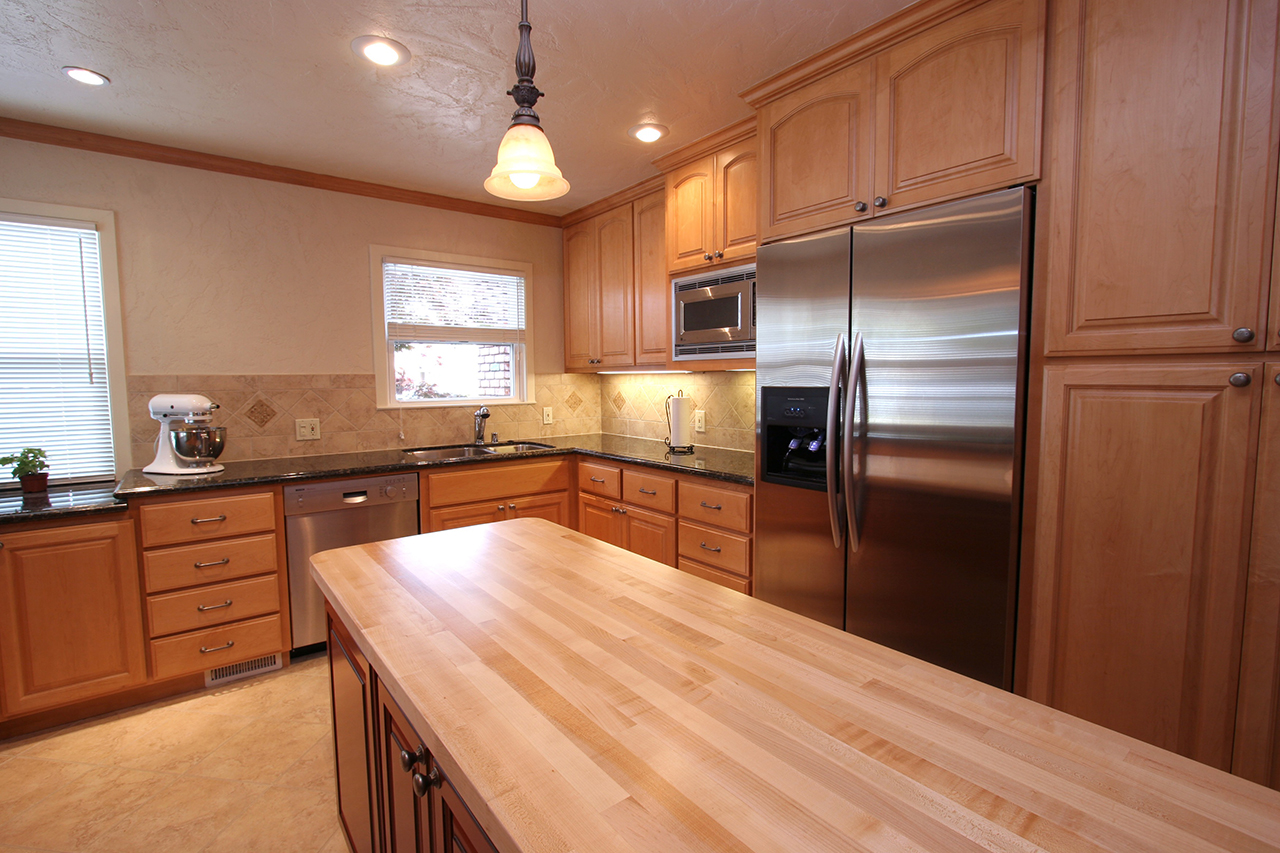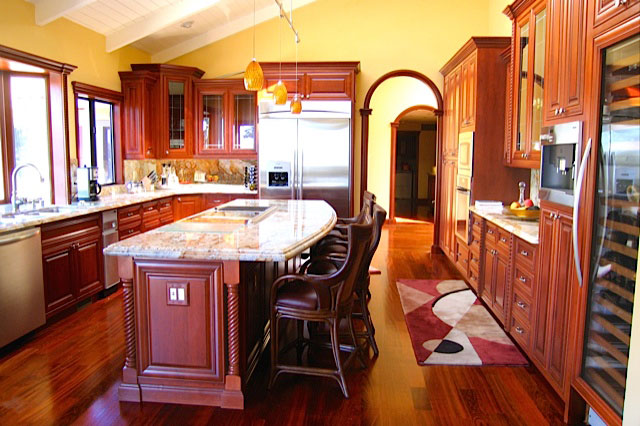Cabinet Refacing Cost

The Affordable Alternative to New Cabinet Replacement
Getting tired of the dull, dreary appearance of your cabinets? Perhaps you’re a new homeowner who wants to turn the house you just bought into something that reflects your own style and personality. Changing the looks of your cabinets can dramatically alter an outdated space from drab to fab. Unfortunately, replacing the entire (old) cabinetry with totally new ones can become prohibitively expensive. As replacement involves gutting and installing new cabinets, costs can easily run into thousands – even exceeding five figures at times. This is where cabinet refacing may come in handy and very much within the homeowner’s reach.
See our cabinet refacing projects made in the Bay Area.
See our cabinet refacing projects made in San Jose.
How much does cabinet refacing cost?
If you’re thinking of giving your kitchen or bathroom a much-needed facelift, yet also want to save some serious cash in the process, cabinet refacing may just be the perfect solution you’re looking for. As long as the integral structure of the cabinet is intact, refacing is one of the simplest approaches to freshen up an aging space in your home. Let’s move ahead and find out just how inexpensive this process is and how much can you actually save compared to entire cabinet replacement.
From a broad perspective, it’s fairly obvious that you’ll be spending a lot less with refacing than if you completely replace all cabinets. Refacing typically costs about half of what it would cost to have an entirely new cabinetry. Contractors often quote cost estimates based on linear foot. Refacing a space of approximately 200 sq ft with 30 linear feet of cabinetry can cost from a low of $1,000 to a high of $9,000 – inclusive of basic materials and installation. Cost can vary if you upgrade to slightly better materials or customize the cabinets according to your specifications.

Cost Details
How much you pay for refacing depends on the size and number of drawer fronts and cabinet doors, the materials and style of doors you select, and the extent of options you choose to include. In many cases, your location or the city where you live, as well as the company doing the job, are also factors that influence the variation in prices.
Materials – There are three basic options to choose from:
- RTF (Rigid Thermofoil) is the most common choice, and generally costs the least expensive among the three. Although sturdy enough to take any abuse, it is vulnerable to damage from heat sources, as the material basically consists of a hard plastic coating over a layer of medium density fiberboard. Quote estimates are usually given based on linear foot. You may be looking at an approximate cost of between $1,000 and $3,000 for the completed project (depending on linear feet/number of cabinets).
- Plastic Laminate is the mid-range option and slightly more expensive than RTF. It comes in a wide variety of solid colors and wood-grain looks, making it a popular choice among urban homeowners. Expect to pay a little bit higher than that of RTF price range.
- Real Wood veneer is the priciest of the three (nearly double the price of either RTF or Laminate material). Typical price range is from $2,500 to $6,000, although it can easily go as high as $7,000 – $9,000 with larger projects or when exotic wood species (e.g., cherry, maple, and the likes) are utilized. Cost can be kept relatively low by using the more affordable species such as ash or oak. Real wood is preferred when nothing else but wood works. Moreover, it provides a more customized look and authentic appearance that many homeowners demand. On top of that, real wood lasts longer with minimal care.
Labor
Although there are kits and materials being sold at home improvement stores for this sort of work, cabinet refacing is not exactly a DIY type of project. Nearly all homeowners hire professionals to perform the job. In most cases, cost estimates require onsite inspection. Be aware that any estimate may be presented with a strong/in-depth sales pitch; however, estimates are usually “free”, with no obligation to hire the company. Variations in labor cost range are largely influenced by job location, work load and the current seasonal wage rates. Installation costs may likewise considerably vary (higher cost) for intricate configurations of some space – multi-corners, non-rectangular shape, multiple levels, etc. Cost estimates may or may not include costs for removal of existing cabinets and new wall framing. Be sure to clarify the inclusive work in the quote. For accuracy, ask for detailed bids from several qualified professional refacers. It should include typical costs for removal of cabinet doors and drawer fronts, delivery, installation, and adjustments (if any), among other things.
Extras/Other things that can drive up costs
Although hardware replacements (e.g., knobs, handles/pulls, hinges, etc.) is the least expensive aspect of cabinet refacing, it can still add up to the total cost of the project. The most basic, no frills handles and knobs are, of course, cheaper with a price range between $2 and $15 per piece; while high-end hardware made of costly materials and those that are more decorative tend to be more expensive at $20 – $50 each. When choosing hardware to complete your cabinet ensemble, you should consider not just the appearance but also functionality. Cabinet organizers and other accessories can also raise refacing costs; however, if you’re like most homeowners, one probable reason for opting to reface your cabinet may be to have enough money for a few extras. Think drawer partitions and rack pull-downs for a more organized storage!
Bottom Line
Based on actual project costs, studies report that the (national) average cost to reface cabinetry is approximately $7,500 – with the majority of homeowners spending between $6,000 and $8,500. Needless to say, it all boils down to personal preference. You can either go for a $3,000 plain-Jane refacing or do it with real wood and some bells and whistles for $9,000. Either way you’re still bound to pay significantly less than the cost it would entail if you replace your entire cabinetry with completely new ones.
Cabinets Bay Area is a collective of design & build professionals. We offer services in cabinet refacing & custom cabinets for ( kitchen & bath ). Through the combined experience of our designers, contractors, cabinet makers & architects we can bring all the resources of the remodeling & construction trade to your unique project.
CALL NOW FOR FREE CONSULTATION.
